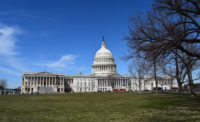
By Dan Hilton,
ASA Director of Government Affairs
Society views gangs through the prism of violence. Webster’s Dictionary defines a gang as “a group of persons working together.” The United States Senate is many things; the world’s most deliberative body or, the world’s most exclusive club (more exclusive than Augusta National when you think about it). Rarely is the U.S. Senate ever referred to as “just another gang.” More often than not, however, “inside the beltway” is precisely what it is.
Gangs form in the Senate every few years, and always in even numbers. They form as the result of such lack of progress that Senators worry about the institution they so love. The term “Gang of 12” or “Gang of Six” has become so widely accepted that you can find it in the transcripts of White House press briefings and in the official blog of the Speaker of the House.
These gangs were given new life in 2005 during a crucial point in judicial nominations in the Senate. Ten of President Bush’s nominees were filibustered by the minority, resulting in the threatened “nuclear option” to be used by the Republican majority. The theory behind this was that the Senate had the right to determine its own rules, and they could be determined on the basis of a majority vote. Democrats resisted, arguing that the Senate’s rules could not be changed without a 2/3 vote as stated in the Senate rules themselves. Republicans responded that the Senate’s power to govern itself was founded in the U.S. Constitution, and internal Senate rules could not deny that power.
The “Gang of 14” was the result of seven members of each party, along the ideological center, in search of an agreement that would end the stalled process. Of the 10 nominees, five were granted a vote and three withdrew their names prior to the gang’s formation. Of the remaining two, one was approved over the opposition of his home state senators; the other withdrew his name.
One of the highest profile names during this process was Miguel Estrada. Supporters of then President George W. Bush have argued that this instance was used to thwart the GOP’s attempt to seat the first Hispanic Supreme Court Justice. If confirmed, Estrada was to have been appointed to the U.S. Court of Appeals for the District of Columbia, often viewed as a stepping stone to the Supreme Court. Past alumni of that court include John Roberts, Antonin Scalia, Clarence Thomas and Ruth Bader Ginsburg.
When we find ourselves fiercely advocating for the presidential or Senate candidate of our choosing, rarely is the judiciary viewed as such a battleground; but in actuality, it is. There are few things as powerful as a lifetime appointment to the federal bench. Think about the money Americans will spend to get their candidates elected, and they will justifiably hold them accountable. Federal judges never have to reapply for their jobs, and they shouldn’t hold themselves accountable to their party or political patron.
Thus, their seats may be worth fighting over. In addition, as we know, both sides love to fight. Whether you support or oppose things such as the Affordable Care Act, an aggressive EPA or burdensome NLRB, who you vote for matters more than you would think. At the end of the day, whoever is placed on the federal bench will have a big say in the future of our republic.
For more information on ASA’s advocacy efforts and what you can do to promote positive change in Washington, please contact ASA’s Director of Government Affairs,Dan Hilton, at 703/328.5234 or atdhilton@asa.net.
ASA Legislative Fly-In
May 15-16, 2012
Capital Hilton Hotel
Washington, D.C.
Please visitwww.asa.netfor more event details, including registration information.


